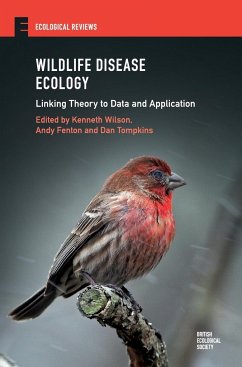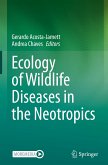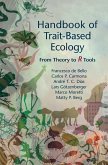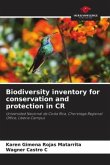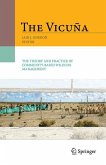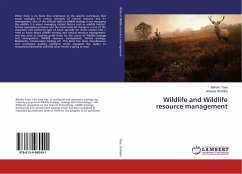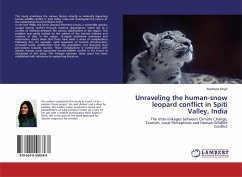Wildlife Disease Ecology
Herausgeber: Fenton, Andy; Wilson, Kenneth; Tompkins, Dan
Wildlife Disease Ecology
Herausgeber: Fenton, Andy; Wilson, Kenneth; Tompkins, Dan
- Gebundenes Buch
- Merkliste
- Auf die Merkliste
- Bewerten Bewerten
- Teilen
- Produkt teilen
- Produkterinnerung
- Produkterinnerung
Introduces readers to key case studies that illustrate how theory and data can be integrated to understand wildlife disease ecology.
Andere Kunden interessierten sich auch für
![Ecology of Wildlife Diseases in the Neotropics Ecology of Wildlife Diseases in the Neotropics]() Ecology of Wildlife Diseases in the Neotropics134,99 €
Ecology of Wildlife Diseases in the Neotropics134,99 €![Ecology and Conservation of Forest Birds Ecology and Conservation of Forest Birds]() Ecology and Conservation of Forest Birds52,99 €
Ecology and Conservation of Forest Birds52,99 €![Handbook of Trait-Based Ecology Handbook of Trait-Based Ecology]() Francesco de BelloHandbook of Trait-Based Ecology92,99 €
Francesco de BelloHandbook of Trait-Based Ecology92,99 €![Biodiversity inventory for conservation and protection in CR Biodiversity inventory for conservation and protection in CR]() Karen Gimena Rojas MatarritaBiodiversity inventory for conservation and protection in CR26,99 €
Karen Gimena Rojas MatarritaBiodiversity inventory for conservation and protection in CR26,99 €![The Vicuña The Vicuña]() The Vicuña75,99 €
The Vicuña75,99 €![Wildlife and Wildlife resource management Wildlife and Wildlife resource management]() Behailu TayeWildlife and Wildlife resource management42,99 €
Behailu TayeWildlife and Wildlife resource management42,99 €![Unraveling the human-snow leopard conflict in Spiti Valley, India Unraveling the human-snow leopard conflict in Spiti Valley, India]() Aradhana SinghUnraveling the human-snow leopard conflict in Spiti Valley, India26,99 €
Aradhana SinghUnraveling the human-snow leopard conflict in Spiti Valley, India26,99 €-
-
-
Introduces readers to key case studies that illustrate how theory and data can be integrated to understand wildlife disease ecology.
Hinweis: Dieser Artikel kann nur an eine deutsche Lieferadresse ausgeliefert werden.
Hinweis: Dieser Artikel kann nur an eine deutsche Lieferadresse ausgeliefert werden.
Produktdetails
- Produktdetails
- Verlag: Cambridge University Press
- Seitenzahl: 724
- Erscheinungstermin: 14. November 2019
- Englisch
- Abmessung: 250mm x 175mm x 43mm
- Gewicht: 1409g
- ISBN-13: 9781107136564
- ISBN-10: 1107136563
- Artikelnr.: 56013606
- Herstellerkennzeichnung
- Libri GmbH
- Europaallee 1
- 36244 Bad Hersfeld
- gpsr@libri.de
- Verlag: Cambridge University Press
- Seitenzahl: 724
- Erscheinungstermin: 14. November 2019
- Englisch
- Abmessung: 250mm x 175mm x 43mm
- Gewicht: 1409g
- ISBN-13: 9781107136564
- ISBN-10: 1107136563
- Artikelnr.: 56013606
- Herstellerkennzeichnung
- Libri GmbH
- Europaallee 1
- 36244 Bad Hersfeld
- gpsr@libri.de
Preface: wildlife disease ecology; Glossary of terms; Part I. Understanding
Within-Host Processes: 1. Pollinator diseases: the Bombus-Crithidia system;
2. Genetic diversity and disease spread: epidemiological models and
empirical studies of a snail-trematode system; 3. Wild rodents as a natural
model to study within-host parasite interactions; 4. From population to
individual host scale and back again: testing theories of infection and
defence in the Soay sheep of St Kilda; 5. The causes and consequences of
parasite interactions: African buffalo as a case study; 6. Effects of host
lifespan on the evolution of age-specific resistance: a case study of
anther-smut disease on wild carnations; 7. Sexually transmitted infections
in natural populations: what have we learnt from beetles and beyond?; Part
II. Understanding Between-Host Processes: 8. Using insect baculoviruses to
understand how population structure affects disease spread; 9. Infection
and invasion: study cases from aquatic communities; 10. Parasite mediated
selection in red grouse - consequences for population dynamics and mate
choice; 11. Emergence, transmission and evolution of an uncommon enemy:
Tasmanian devil facial tumour disease; 12. Bovine tuberculosis in badgers:
sociality, infection and demography in a social mammal; 13. Mycoplasma
ovipneumoniae in bighorn sheep: from exploration to action; 14.
Manipulating parasites in an Arctic herbivore: gastrointestinal nematodes
and the population regulation of Svalbard reindeer; Part III. Understanding
Wildlife Disease Ecology at the Community and Landscape Level: 15. The
ecological and evolutionary trajectory of oak powdery mildew in Europe; 16.
Healthy herds or predator spreaders? Insights from the plankton into how
predators suppress and spread disease; 17. Multi-trophic interactions and
migration behaviour determine the ecology and evolution of parasite
infection in monarch butterflies; 18. When chytrid fungus invades:
integrating theory and data to understand disease- induced amphibian
declines; 19. Ecology of a marine ectoparasite in farmed and wild salmon;
20. Mycoplasmal conjunctivitis in house finches: the study of an emerging
disease; 21. Heterogeneities in infection and transmission in a
parasite-rabbit system: key issues for understanding disease dynamics and
persistence; 22. Sylvatic plague in Central Asia: a case study of abundance
thresholds.
Within-Host Processes: 1. Pollinator diseases: the Bombus-Crithidia system;
2. Genetic diversity and disease spread: epidemiological models and
empirical studies of a snail-trematode system; 3. Wild rodents as a natural
model to study within-host parasite interactions; 4. From population to
individual host scale and back again: testing theories of infection and
defence in the Soay sheep of St Kilda; 5. The causes and consequences of
parasite interactions: African buffalo as a case study; 6. Effects of host
lifespan on the evolution of age-specific resistance: a case study of
anther-smut disease on wild carnations; 7. Sexually transmitted infections
in natural populations: what have we learnt from beetles and beyond?; Part
II. Understanding Between-Host Processes: 8. Using insect baculoviruses to
understand how population structure affects disease spread; 9. Infection
and invasion: study cases from aquatic communities; 10. Parasite mediated
selection in red grouse - consequences for population dynamics and mate
choice; 11. Emergence, transmission and evolution of an uncommon enemy:
Tasmanian devil facial tumour disease; 12. Bovine tuberculosis in badgers:
sociality, infection and demography in a social mammal; 13. Mycoplasma
ovipneumoniae in bighorn sheep: from exploration to action; 14.
Manipulating parasites in an Arctic herbivore: gastrointestinal nematodes
and the population regulation of Svalbard reindeer; Part III. Understanding
Wildlife Disease Ecology at the Community and Landscape Level: 15. The
ecological and evolutionary trajectory of oak powdery mildew in Europe; 16.
Healthy herds or predator spreaders? Insights from the plankton into how
predators suppress and spread disease; 17. Multi-trophic interactions and
migration behaviour determine the ecology and evolution of parasite
infection in monarch butterflies; 18. When chytrid fungus invades:
integrating theory and data to understand disease- induced amphibian
declines; 19. Ecology of a marine ectoparasite in farmed and wild salmon;
20. Mycoplasmal conjunctivitis in house finches: the study of an emerging
disease; 21. Heterogeneities in infection and transmission in a
parasite-rabbit system: key issues for understanding disease dynamics and
persistence; 22. Sylvatic plague in Central Asia: a case study of abundance
thresholds.
Preface: wildlife disease ecology; Glossary of terms; Part I. Understanding
Within-Host Processes: 1. Pollinator diseases: the Bombus-Crithidia system;
2. Genetic diversity and disease spread: epidemiological models and
empirical studies of a snail-trematode system; 3. Wild rodents as a natural
model to study within-host parasite interactions; 4. From population to
individual host scale and back again: testing theories of infection and
defence in the Soay sheep of St Kilda; 5. The causes and consequences of
parasite interactions: African buffalo as a case study; 6. Effects of host
lifespan on the evolution of age-specific resistance: a case study of
anther-smut disease on wild carnations; 7. Sexually transmitted infections
in natural populations: what have we learnt from beetles and beyond?; Part
II. Understanding Between-Host Processes: 8. Using insect baculoviruses to
understand how population structure affects disease spread; 9. Infection
and invasion: study cases from aquatic communities; 10. Parasite mediated
selection in red grouse - consequences for population dynamics and mate
choice; 11. Emergence, transmission and evolution of an uncommon enemy:
Tasmanian devil facial tumour disease; 12. Bovine tuberculosis in badgers:
sociality, infection and demography in a social mammal; 13. Mycoplasma
ovipneumoniae in bighorn sheep: from exploration to action; 14.
Manipulating parasites in an Arctic herbivore: gastrointestinal nematodes
and the population regulation of Svalbard reindeer; Part III. Understanding
Wildlife Disease Ecology at the Community and Landscape Level: 15. The
ecological and evolutionary trajectory of oak powdery mildew in Europe; 16.
Healthy herds or predator spreaders? Insights from the plankton into how
predators suppress and spread disease; 17. Multi-trophic interactions and
migration behaviour determine the ecology and evolution of parasite
infection in monarch butterflies; 18. When chytrid fungus invades:
integrating theory and data to understand disease- induced amphibian
declines; 19. Ecology of a marine ectoparasite in farmed and wild salmon;
20. Mycoplasmal conjunctivitis in house finches: the study of an emerging
disease; 21. Heterogeneities in infection and transmission in a
parasite-rabbit system: key issues for understanding disease dynamics and
persistence; 22. Sylvatic plague in Central Asia: a case study of abundance
thresholds.
Within-Host Processes: 1. Pollinator diseases: the Bombus-Crithidia system;
2. Genetic diversity and disease spread: epidemiological models and
empirical studies of a snail-trematode system; 3. Wild rodents as a natural
model to study within-host parasite interactions; 4. From population to
individual host scale and back again: testing theories of infection and
defence in the Soay sheep of St Kilda; 5. The causes and consequences of
parasite interactions: African buffalo as a case study; 6. Effects of host
lifespan on the evolution of age-specific resistance: a case study of
anther-smut disease on wild carnations; 7. Sexually transmitted infections
in natural populations: what have we learnt from beetles and beyond?; Part
II. Understanding Between-Host Processes: 8. Using insect baculoviruses to
understand how population structure affects disease spread; 9. Infection
and invasion: study cases from aquatic communities; 10. Parasite mediated
selection in red grouse - consequences for population dynamics and mate
choice; 11. Emergence, transmission and evolution of an uncommon enemy:
Tasmanian devil facial tumour disease; 12. Bovine tuberculosis in badgers:
sociality, infection and demography in a social mammal; 13. Mycoplasma
ovipneumoniae in bighorn sheep: from exploration to action; 14.
Manipulating parasites in an Arctic herbivore: gastrointestinal nematodes
and the population regulation of Svalbard reindeer; Part III. Understanding
Wildlife Disease Ecology at the Community and Landscape Level: 15. The
ecological and evolutionary trajectory of oak powdery mildew in Europe; 16.
Healthy herds or predator spreaders? Insights from the plankton into how
predators suppress and spread disease; 17. Multi-trophic interactions and
migration behaviour determine the ecology and evolution of parasite
infection in monarch butterflies; 18. When chytrid fungus invades:
integrating theory and data to understand disease- induced amphibian
declines; 19. Ecology of a marine ectoparasite in farmed and wild salmon;
20. Mycoplasmal conjunctivitis in house finches: the study of an emerging
disease; 21. Heterogeneities in infection and transmission in a
parasite-rabbit system: key issues for understanding disease dynamics and
persistence; 22. Sylvatic plague in Central Asia: a case study of abundance
thresholds.

